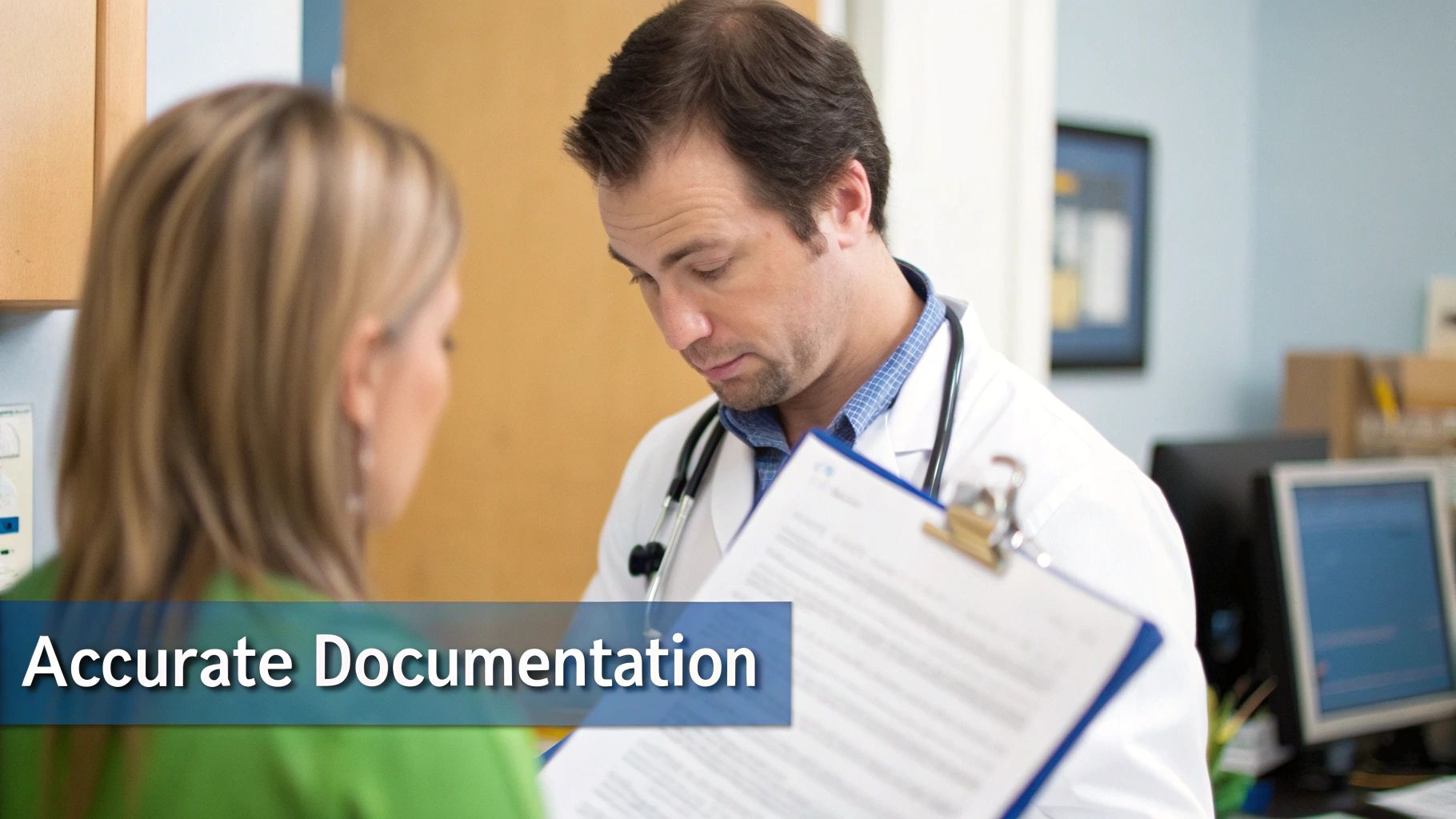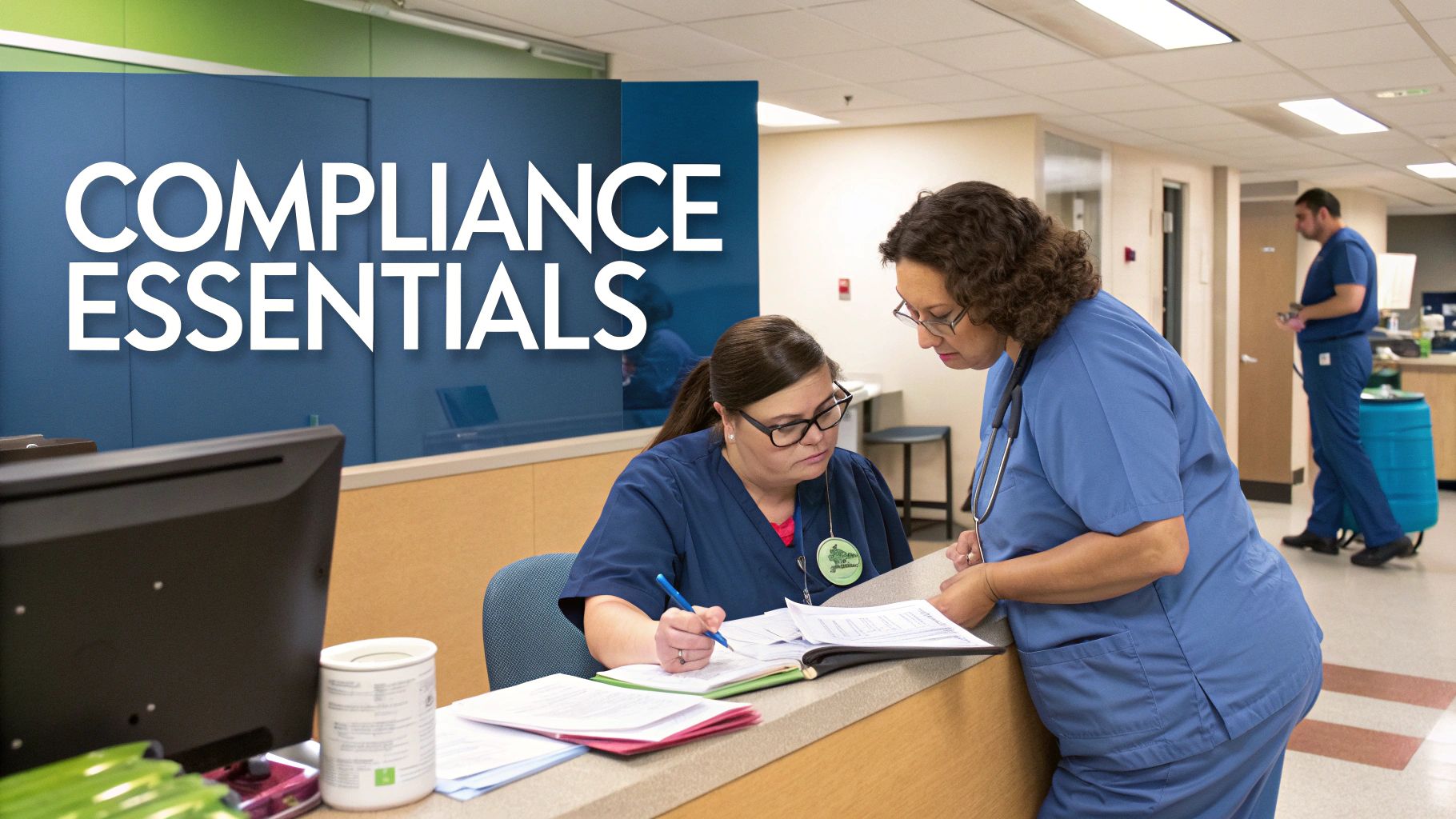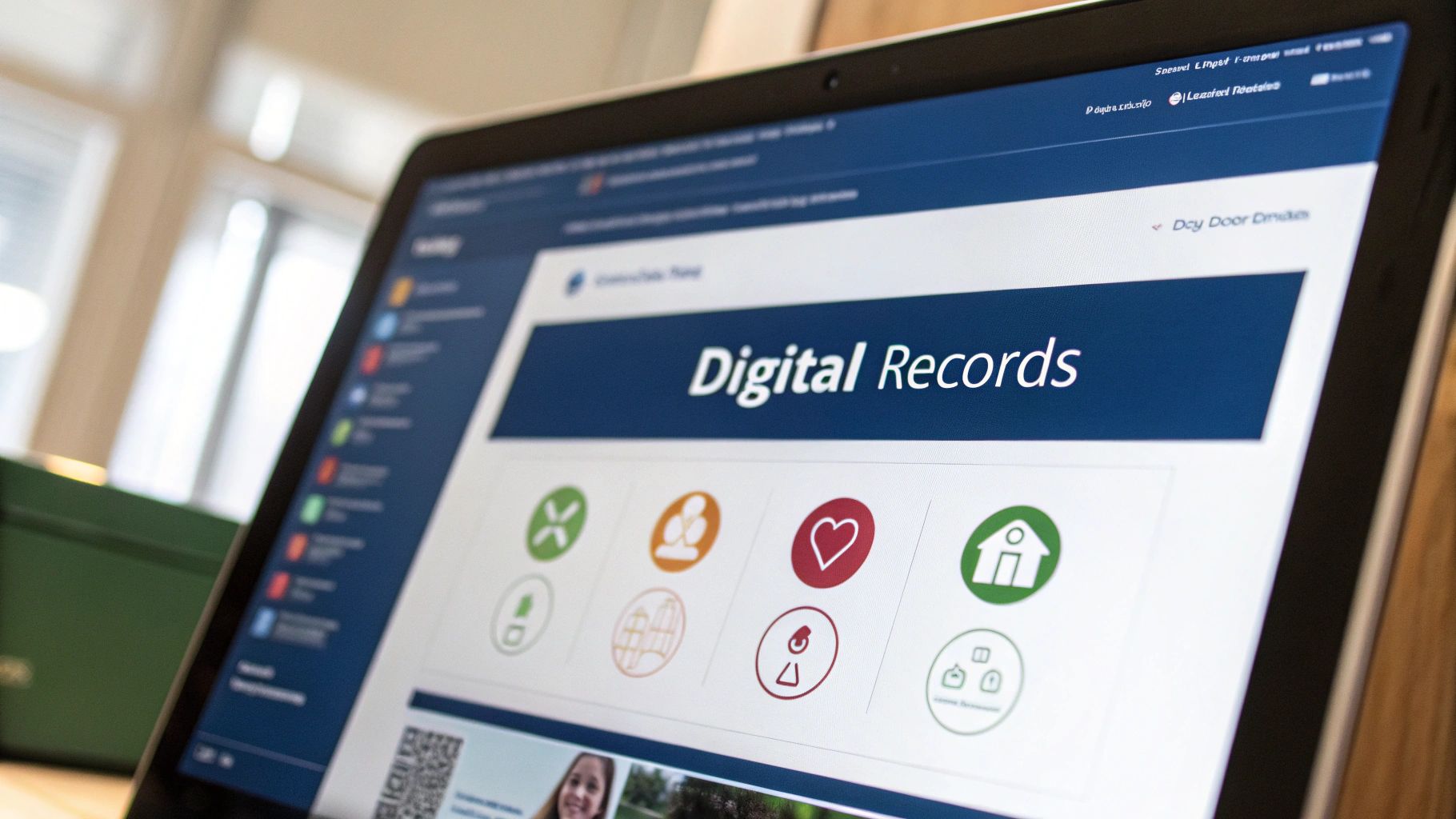Essential Medical Documentation Guidelines: A Step-by-Step Guide for Healthcare Success
Content must follow Example Blog Posts style but within origina Section. I will write rewritten text:
The Evolution of Medical Documentation: From Paper to Digital Excellence

The way medical records are kept has changed dramatically since the days of paper charts. Those traditional handwritten notes created major headaches - doctors' notorious handwriting made them hard to read, paper files took up massive storage space, and finding specific information quickly was nearly impossible. This made it extremely difficult for different healthcare providers to work together effectively.
Paper records also prevented healthcare teams from spotting trends or making improvements based on patient data. Something as basic as identifying all patients with a particular condition required manually reviewing countless charts. But technological progress opened the door to much better solutions.
The Rise of Digital Documentation and EHRs
The arrival of Electronic Health Records (EHRs) changed everything about medical documentation. These digital systems solved the key problems with paper records - now notes are always readable, take up minimal space, and can be retrieved instantly. Medical teams can easily share information and work together more smoothly. Most importantly, having structured digital data enables analysis that drives smarter decisions and better care.
The numbers show how quickly EHRs have become standard practice. According to recent data, 96% of non-federal hospitals and 78% of doctors' offices now use certified EHR systems. That's a huge jump from 2011, when adoption was only at 28% and 34% respectively. See the full statistics here: Health IT EHR Adoption Trends
Modern Challenges and Opportunities in Medical Documentation
While EHRs represent major progress, they come with their own set of challenges. Creating consistent documentation guidelines is essential - without them, data becomes fragmented and systems can't work together properly. Security is another critical concern, as digital records must be protected with strong access controls and encryption.
But the benefits of digital documentation far outweigh these hurdles. Large-scale data analysis can uncover new treatment insights. Patient portals give people direct access to their own records, helping them take charge of their health. As technology keeps advancing, medical documentation will continue evolving in ways that improve safety, quality of care, and efficiency across healthcare.
Building Blocks of Exceptional Medical Documentation
Medical documentation is essential for providing quality patient care. It enables healthcare teams to communicate effectively and ensures everyone has access to critical patient information. Good documentation practices help coordinate care, prevent medical errors, and lead to better patient outcomes. Beyond clinical care, proper documentation is vital for legal protection and regulatory compliance.
Key Elements of Effective Medical Documentation
The foundation of good medical documentation includes several critical components. A complete patient medical history should detail current illnesses, past conditions, allergies, and medications. Physical exam findings must be documented clearly, along with the reasoning behind diagnoses and treatment decisions. Each entry requires the date, time, and signature of the healthcare provider to maintain accountability and create an accurate timeline.
You might be interested in: How to master healthcare documentation standards
Adhering to Medical Documentation Guidelines
Organizations like the National Committee for Quality Assurance (NCQA) provide documentation standards that include 21 key requirements. The NCQA guidelines specify that each page must show the patient's name or ID, significant medical conditions appear on the problem list, medication allergies and reactions are clearly noted, and diagnoses align with clinical findings. Find detailed guidance here: NCQA Guidelines for Medical Record Documentation
Practical Approaches to Organizing Patient Information
Well-organized documentation helps deliver better patient care. Using structured formats like SOAP notes (Subjective, Objective, Assessment, Plan) provides a clear framework for documenting patient visits. Recording information chronologically makes it simple to track a patient's progress and treatment effectiveness. Using standard terminology and approved abbreviations within your healthcare setting improves clarity and reduces miscommunication between providers.
Following these documentation practices helps healthcare teams deliver high-quality care while meeting compliance requirements and maintaining clear communication across all providers involved in patient care.
Mastering E/M Documentation Requirements

Evaluation and Management (E/M) documentation forms the foundation of medical billing and getting paid correctly. Many healthcare providers find it challenging to balance thorough documentation with efficient patient care. Here's how successful clinicians master these requirements while staying focused on their patients.
Understanding the Importance of E/M Documentation
Good E/M documentation directly affects patient outcomes by enabling clear communication between providers. When records are detailed and organized, doctors can make more informed decisions about care. Proper documentation also helps justify billing levels and provides protection during audits or legal situations.
Navigating Recent Changes in Medical Documentation Guidelines
The documentation rules have evolved significantly over time. Until January 2023, providers followed the complex 1995 and 1997 guidelines that required extensive details about patient history, complaints, systems review, and background information. Check out more about previous requirements here: A1 History 101. Recent updates have made the process more straightforward while maintaining high standards.
Practical Approaches to Documenting Each Service Level
Key elements for successful E/M documentation include:
- Medical Decision Making (MDM): Document the complexity of problems, data reviewed, and risk factors clearly
- Time-Based Documentation: Track both direct patient care time and related activities like reviewing results
- Smart Workflow Integration: Use tools like templates and voice recognition to document efficiently while maintaining focus on patients. Learn more: HIPAA Compliance Requirements Checklist
Optimizing Your Documentation Process
Improving E/M documentation requires ongoing attention and refinement. Regular audits of your documentation help identify areas needing improvement. Getting feedback from peers and staying current on guideline changes also helps maintain best practices. Following these approaches helps ensure accurate records that support quality patient care and proper payment.
Clinical Documentation Strategies That Drive Results
Creating effective clinical documentation requires more than just checking boxes. It needs a thoughtful approach that balances efficiency and detail to support quality patient care. Leading healthcare organizations use practical methods to strengthen their documentation practices and improve outcomes.
Standardizing Documentation Processes for Consistency
Standardization is essential for reliable documentation. Just like following a recipe ensures consistent results, using standard templates and procedures makes sure all important patient information gets captured properly. When everyone follows the same documentation approach, nothing gets missed.
Common guidelines help maintain quality across an entire healthcare organization. This matters most in larger practices where many providers contribute to patient records. Clear standards lead to better data quality, making it easier to monitor patient progress and spot important patterns.
Implementing Effective Templates and Maintaining Consistency
Good templates save time while ensuring thorough documentation. They guide clinicians to include all required information without starting from scratch each time. For example, a check-up template includes sections for vitals, medications, system review, and the care plan.
At the same time, templates need flexibility. Each patient is unique, so documentation should reflect individual circumstances. The key is finding the right balance between standard structure and personalized notes to accurately document each patient's situation.
Developing Documentation Habits That Support Better Patient Outcomes
Quality documentation depends on good habits. Healthcare providers should focus on writing clear, direct notes that any team member can understand. Skip jargon and vague language to prevent confusion and mistakes.
Documentation needs to be complete and accurate to help patients get better care. The American College of Physicians emphasizes that clinical documentation's main purpose is supporting patient care and provider communication. Thorough records protect practices legally and ensure proper payment. When providers develop strong documentation habits, they create a safer, more effective healthcare environment focused on patient needs.
Using Technology to Excel in Medical Documentation

Good medical documentation requires effective use of technology. Healthcare providers must select appropriate tools that improve their documentation while following medical guidelines. Let's explore how leading healthcare organizations use technology to create accurate records and provide better patient care.
Choosing the Right Documentation Tools
Several key factors determine which documentation technology will work best. The system must be easy to use - a complicated interface reduces efficiency and adoption. Integration with existing Electronic Health Record (EHR) systems is vital for smooth data flow. Strong security features are essential to protect patient information. The system should also scale well as data needs grow, with different requirements for small clinics versus large hospitals.
Making New Technology Work
Successfully implementing documentation technology takes careful planning. Staff need thorough training on both technical aspects and how the system supports medical documentation standards and patient care. Clear communication about benefits, like time savings and error reduction, helps gain staff support. Read more about mastering electronic health records training.
Measuring Success and Improving Workflows
New technology must fit smoothly into existing processes. This often means adjusting workflows to make the most of automation features like report generation, which frees up time for patient care. Track key metrics like documentation time before and after implementation to measure return on investment (ROI). This data shows the value gained and helps justify future upgrades.
What's Next in Medical Documentation
Medical documentation keeps advancing through technology. Artificial intelligence (AI) and machine learning are set to improve documentation by enabling automated data entry, real-time quality feedback, and predictive analytics for better patient outcomes. However, healthcare organizations must carefully consider privacy and ethics when adopting new tools. With thoughtful implementation of technology, medical documentation can become more efficient while improving care quality.
Building a Culture of Documentation Excellence

Creating excellent medical documentation requires more than just following rules - it needs the right organizational culture. When healthcare teams understand how their documentation directly improves patient care, they're more likely to maintain high standards consistently.
Key Strategies for Building Excellence
- Effective Training: Regular updates help staff stay current on documentation best practices. Focus training on practical skills and provide resources that make it easier for staff to document accurately and efficiently.
- Quality Monitoring: Check documentation quality regularly through systematic reviews. This helps catch and fix issues early while building accountability across teams.
- Recognition Programs: Celebrate staff who consistently produce high-quality documentation. When people know their careful work matters, they stay motivated to maintain those standards.
Conducting Documentation Audits
Regular audits are essential quality checks that help organizations stay on track. By reviewing records systematically, healthcare providers can ensure their documentation meets clinical needs and regulatory requirements.
| Audit Focus Areas | Benefits |
|---|---|
| Completeness and Accuracy | Ensures all necessary information is captured |
| Consistency Across Records | Standardizes format and structure |
| Adherence to Guidelines | Maintains regulatory compliance |
Engaging Staff in Improvement Initiatives
Staff input is vital for making documentation practices better. Ask teams what challenges they face and what solutions they suggest. When staff help shape improvements, they're more invested in making them work.
Frameworks for Measuring Documentation Quality
Clear metrics help track progress in documentation quality. Create measurement systems that align with your organization's goals to guide improvement efforts effectively.
Building strong documentation practices takes ongoing commitment from everyone involved. To make documentation easier and more efficient, consider using Whisperit AI to support your team's documentation workflow.